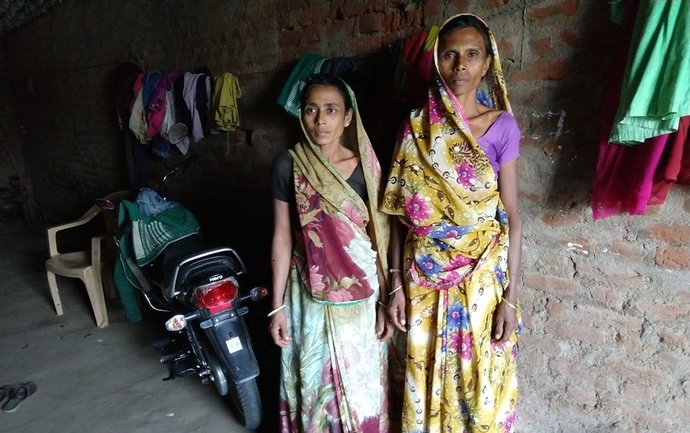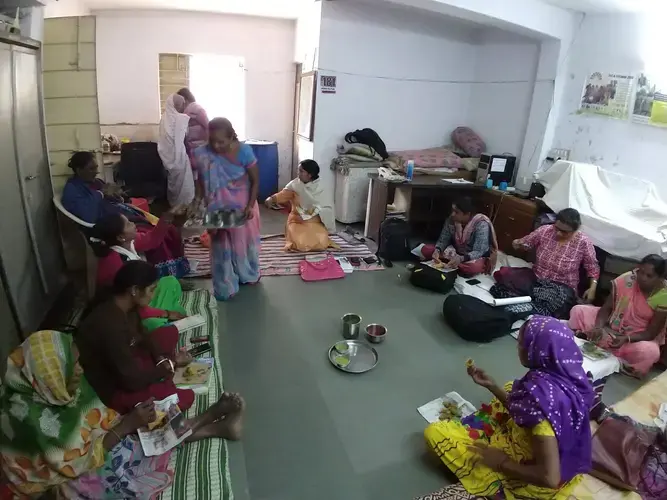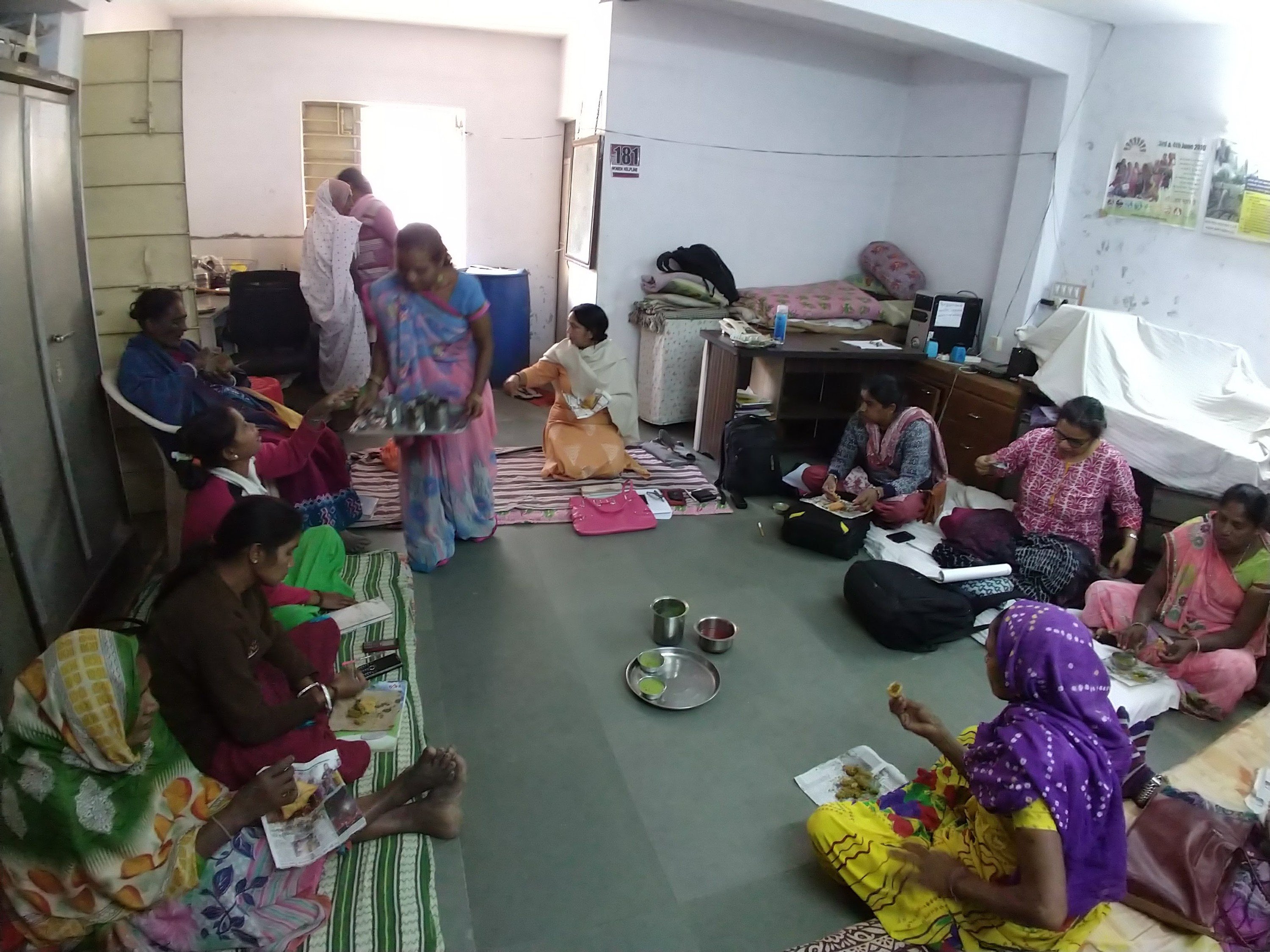
Men circled the three women, their fists wrapped around thick iron pipes and wooden sticks. The women huddled on the ground at the center of their village in the western Indian state of Gujarat and whimpered as the crowd gathered. Two young men had died in the village, and the women were being called dakan, the Gujarati word for witch. They were accused of feasting on the young men’s souls.
Madhuben clutched her right upper arm. She had taken three blows from one of the pipes and was sure her bones were broken. Her sisters-in-law, Susilaben and Kamlaben, covered their heads as wood and metal pounded their backs. (The names of women targeted by witch hunts have been changed in this story, to minimize the risk of further assault or of jeopardizing pending legal cases.)
The attack on the trio, in Gujarat in 2014, was one of thousands of witch hunts that take place in India. More than 2,500 Indians have been chased, tortured and killed in such hunts between 2000 and 2016, according to India’s National Crime Records Bureau. Activists and journalists say the number is much higher, because most states don’t list witchcraft as a motive of murder. Witch hunts primarily target women and exploit India’s caste system and culture of patriarchy. Men who brand women as dakan capitalize on deeply rooted superstitions and systems built on misogyny and patriarchy to lay blame on females. The accusations of sorcery are used to oust women from valuable land that men covet, in a region where flawed development plans have produced agricultural failures, say sociologists who study violence in India. Witches are also convenient explanations for rising infant mortality rates and deaths from malaria, typhoid and cholera.
A few states have adopted anti–witch hunting laws, but Gujarat is not one of them. Women there are using their own resources to fighti back. At ANANDI, a Gujarati nonprofit that supports vulnerable communities, women sit in a circle on the floor and share samosas and stories. “We protect each other. It’s how we find strength,” one of them says. The women are learning the law, demanding a desk in the local police station so they can advocate for women who walk in to report violence, and they are pushing for witch hunting to be outlawed.
Land Grabs, Health and Witches
In December 2017 Susilaben and her sister-in-law, Madhuben, who were beaten during the witch hunt four years ago, sat on the dirt floor inside a friend’s house, talking to me. It has been three years since the attack and the sisters-in-law say it is not safe to discuss the witch hunt in their own home because they still live with the men who called them dakan and beat them. Madhuben’s cheeks are hollow, the whites of her eyes visible. “I am scared in my own home,” she says. “Too scared to eat. I faint with fear. What kind of way is this to live?”
The violence and accusations against Madhuben, Susilaben and their sister-in-law began in 2012. That year the three women found their male relatives routinely defecating in the plot of land where the sisters grew corn, lentils and peas. Almost half of India’s households lack a toilet, according to the 2011 census, and many of those people defecate in the open. Of the 1.7 million people around the world who die each year because of a lack of sanitation and access to clean toilets, 600,000 live in India.

The sisters-in-law were upset with their male relatives’ using their crops as a toilet. “I said to them, ‘This is where we grow food. How are we supposed to deal with [human excrement] here?’” Susilaben says. This challenge to men in a culture where women are expected to be silent subordinates infuriated her family, she recalls. The men did not stop defecating on the land. Instead they turned on the women, beat them and ran them out of their home for 10 days.
The situation worsened a year or so later, when two young men in their home became ill. One developed renal failure, the other cancer. Poor access to health care in the region meant the family was forced to take out loans and travel to neighboring towns for medical help. Money was scarce and stress was high. When the young men died, the sisters-in-law were accused of eating their souls and causing their premature deaths. And then the remaining men began a campaign to take their land.
The plot where the women grew vegetables was fertile and in a prime location, at a four-way road junction in the village. That was the spot where they were beaten. Male relatives forced the sisters-in-law to sign a document saying they would hand over land ownership to the men. “We had no choice but to sign,” Susilaben says. “They said they would kill us if we didn’t give them our land.” The farming land is now a series of roadside stores selling slippers, stationery, car parts and clothes.
Battles over land and property are common starts to witch hunts, says Soma Chaudhuri, a sociologist at Michigan State University who studies gender violence in India. Chaudhuri says witch hunts and beatings provide an outlet for men living in poverty to vent frustrations over their own lack of power. “These rural communities are so marginalized and so oppressed, and they have no political resources and no avenues of protest. So what do people do when they’re very frustrated? You look to your surroundings for an easy scapegoat. Women are that scapegoat.” Long-standing cultural traditions of patriarchy, where men are supposed to control family resources, make women who may have inherited their own land easy targets, Chaudhuri says. With those patriarchal values comes misogyny and denigration of women, she adds.
In Gujarat worsening inequalities between urban and rural communities may be another triggering factor, experts say. Gujarat is lauded by the government as one of India’s most developed states. The ruling Bharatiya Janata Party, led by prime minister Narendra Modi, formerly Gujarat’s chief minister, has even run on the slogan: “I am development, I am Gujarat.” The image that politicians push is of a modernizing region that has moved past issues of gender inequality and bias.
In the villages where Susilaben and her sisters-in-law live in eastern Gujarat’s Dahod District the reality is vastly different, says Kiran Desai, a professor at Veer Narmad South Gujarat University’s Center for Social Studies. Whereas the government can point to highways and hospitals in cities, Desai says, infant mortality in rural areas is rising, air quality is worsening and agricultural conditions are deteriorating. According to the National Family Health Survey, fewer children are immunized and more children under the age of five years are malnourished and severely underweight in Dahod compared with the national average. “It’s an illusion, this Gujarat model of development,” Desai says. “What we’re actually seeing is inequality rising because the model boosted manufacturing in the cities while neglecting agriculture in the villages.” Chaudhuri argues the model completely excludes the communities where many of the women targeted in witch hunts reside, places like Dahod where poverty and sickness boil over into frustration and violence toward women. “The witch hunt is the final expression of frustration.”
Even in the cities, Desai points out, the economic changes have “had an impact on household gender dynamics.” For instance, when the state’s urban textile mills began closing in the 1980s, men were left unemployed and women, who made a living selling vegetables or sewing clothes, became the breadwinners. Chaudhuri has interviewed many of the former mill workers and found the unemployed men retained control of their wives’ finances, and that alcoholism and violence against women increased in the wake of the mill closures.
Women Supporting Women
After Susilaben and her sisters-in-law were attacked as witches, they looked for help at ANANDI, and discovered they were not the only women in Dahod suffering accusations of sorcery. Another woman, Ranjuben, was there, and said she had been accused of being a dakan when a one-year-old girl in her village died. “She was sick for a long time, a year I think. But they said, ‘You ate her,’ and a mob came to beat me,” she recalls. Still another woman, Ushaben, said she was named as a witch when she asked a man to repay a loan.
The women meet regularly at ANANDI’s regional office in Dahod District. One morning last month 15 women sat in a circle on chadors they had draped over the floor. They shared samosas and sang songs about the violence they suffer from men. “Who can I tell about my pain?” sang one woman. Those in the circle responded, singing that they would listen and help.
The group of women work as on-call responders to gender violence. On a visit to a nearby village where a recently widowed woman had been accused of being a dakan, one of the group told her: “Remember our number. Teach the number to your children. If anyone hurts you, call us. We will come and we will even bring the police.”
The women travel from village to village using songs and plays to get the attention of locals while warning village women about the early symptoms of malaria and cholera, teaching them which foods to feed a weaning child, and reminding them that accusations of witchcraft should be reported to the police. “The police don’t write dakan in the [first information report] but we go to the police station and we tell them, ‘This woman was beaten in a witch hunt. Write dakan in your report,’” one member of the group says. She adds that accurate reporting will shed light on the extent of the problem. The organization is pushing the state to enact laws that punish men for branding women dakan.
Susilaben and her two sisters-in-law are taking their case to the courts with the help of ANANDI. They hope to challenge the men who took their land and accused them of witchcraft. In addition to the land grab, the sisters say, the men found a holy man who agreed with the dakan charge and insisted the women pay 30,000 rupees to their male relatives. The sisters-in-law took out a loan to pay the money.
At the morning meeting in ANANDI’s Dahod office, after samosas and masala chai tea are passed around the circle, one woman asks: “Does this kind of thing happen to women elsewhere?” Somebody mentions witch trials in Salem, Mass., in the late 1600s as well as continuing domestic violence in the West. “Yes, it does,” an ANANDI staffer responds. “One way or another, women are under attack everywhere.”









